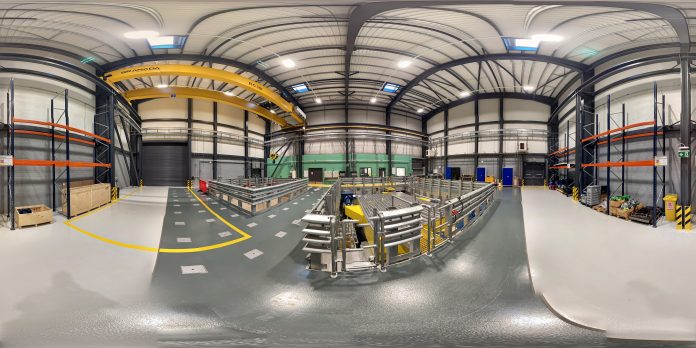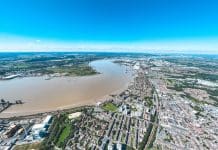The UKCRIC Soil-Foundation-Structure Interaction (SoFSI) facility is a world-first and will alter the way we design and construct major infrastructure
The SoFSI is a one-of-a-kind facility that promises to deliver major cost savings and reduce the carbon of infrastructure projects such as High Speed 2 (HS2), bridges and offshore wind farms.
It has been designed for research into five areas including:
- Nuclear power plant soil-structure interaction
- High speed rail
- Offshore wind turbines
- Monopiles and pile groups
- Integral bridges
Building design and infrastructure
The laboratory looks at how buildings and infrastructure interact with the ground when subjected to dynamic loads. It houses a four-metre (6m x 5m x 4m) deep soil pit for testing foundations, a 50-ton capacity biaxial shaking table for dynamic testing of structures, and a smaller, high-performance, six-axis shaking table.
Researchers and industry will be able to investigate how foundations, dynamic loading and soil interact so they can identify more efficient building methods and significantly improve the safety of future infrastructure.
Cost-efficiency of construction
This research will inform the design of smart solutions to improve the resilience of such infrastructure, and, crucially, the cost-efficiency of construction.
The University of Bristol received £12m from the Engineering and Physical Sciences Research Council (EPSRC) for the construction of the SoFSI Laboratory at its Langford Campus to enable large, close to prototype scale experiments for use by both academics and industry.
‘Safety of infrastructure is paramount’
Professor of Earthquake Engineering, Anastasios Sexos said: “Ensuring the long-term safety of critical infrastructure is paramount, particularly when it comes to building nuclear power stations or high-speed rail.
“The aim of this testing facility is to inform design that is not only safer but also cost-efficient.
“Investigating how buildings and infrastructure interact with the ground under natural and man-made hazards allows us to improve the smartness and resiliency of our infrastructure while at a lower financial cost and a reduced environmental footprint.”
‘Cut the cost of building infrastructure’
Dr Flavia De Luca, Senior Lecturer in Structural and Earthquake Engineering, said: “At the University of Bristol, we’re investing in state-of-the-art testing facilities that will help cut the cost of building the infrastructure of the future.
“For example, high speed rail will require many new bridges to cross waterways, roads, and other rail lines.
“SoFSI has been designed to help us understand, among other issues, how the span of lower cost, minimal maintenance integral bridges can be extended so that new high speed railway lines would be faster to construct, cheaper to maintain, more resilient to climate change, and enable us to minimise resource requirements.”
Carbon net zero
Dean of the Faculty of Engineering, Professor Ian Bond, added: “Investing in our state-of-the-art research facilities within the Faculty of Engineering keeps us at the forefront of global research across a wide range of fields and positions our researchers to support the delivery of carbon net zero.”
The site officially opened its doors today (27th January 2022).




![[VIDEO] HS2 completes 4,600-tonne viaduct slide across M6 The HS2 team completed a 17-hour long operation sliding the viaduct structure across the M6 without closing the motorway](https://www.pbctoday.co.uk/news/wp-content/uploads/2025/12/M6-South-viaduct-slide-taking-place-across-a-live-motorway-December-2025-218x150.jpg)









